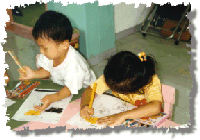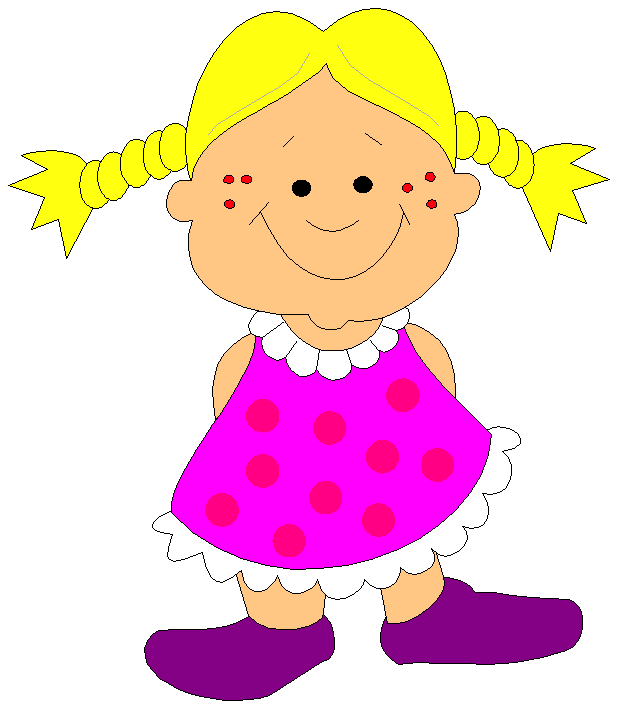As a teacher of English, I always use Jazz Chants to motivate students to pronounce English as often as possible with fun. They will enjoy repetition of words in verse and can memorize quickly. Teacher can have them do the action along the chants and tell a story simultaneously. This sample of Jazz Chants was once used in my class and I found students loved to pronounce, do the action and tell the story according to the chant. This chant is called "Who stole the cookies from the cookie jar". I have them listen to the story first by having them know I tried to find someone who stole my cookies from the cookie jar. I started to tell that once there was an old woman who lived in an old house. She liked to make cookies for her niece "The Little Red Riding Hood". One day a naughty boy came to her house and stole her cookies from the cookie jar. I prepared real materials like cookies in a jar and supposed myself the old woman who wanted to know who stole her cookies. I walked around the class and asked students with this question in chant:
-Who stole the cookies from the cookie jar? Then I used a puppet to answer me that.....
-Who, me? (And continue with......)
- Yes, you! (Now I used high voice to emphasize this)
- Couldn't be!
- Then, who? (And I started to ask the same question again until I got the one who stole the cookies.)
Students enjoyed interacting with questions and answers along the chant. And they also practice speaking. I thought that this was useful to motivate students to speak up with a chant or storytelling. If you want to get more different details, please go to this following website:
http://members.tripod.com/~ESL4Kids/chants.html
The Three Bears
Snap fingers or clap hands each time you see a word in parenthesis.
(Once) upon a (time) in the (mid)dle of the (woods),
There were (three) (bears).
(One) was a (Pa)pa bear,
(One) was a (Ma)ma bear,
(One) was a (Wee) Bear. ((x)) ((x)).
A(long) came the (girl) with the (gold)en curls.
She (knocked) on the (door) but (no) one was (there).
So she (walked) right (in) cause she (did)n't care.
(Home), (home), (home), came the (Pa)pa bear,
(Home), (home), (home), came the (Ma)ma bear,
(Home), (home), (home), came the (wee) bear. ((x)) ((x))
Change voice with each bear.
"(Some)one's been (eat)ing my (porr)idge!" ((x)) said the (Pa)pa
(bear). Use deep voice.
"Grrrrrrrr!" Make claws of hands.
"(Some)one's been (eat)ing my (porr)idge! ((x)) said the (Ma)ma
(bear). Use soft voice.
"Ahhhhhhh!" Put hands to face in shock.
"(Hey)-baba-(ree)-bear," (said) the little (wee) bear, "(Some)one
has (eat)en my (soup)! Use high, squeaky voice.
Hmmmmmph!" Cross arms across chest and make pouting face.
"(Some)one's been (sit)ting in (my) (chair)!" said the (Pa)pa
(bear).
"Grrrrrrrrr"
"(Some)one's been (sit)ting in (my) (chair)!" said the (Ma)ma
(bear)!"
"Ahhhhhhh"
"(Hey)-baba-(ree),bear," said the little (wee) bear, "(Some)one
has (brok)en my (seat)!
Hmmmmmph!"
"(Some)one's been (sleep)ing in (my) (bed)!" said the (Pa)pa (bear)!
"Grrrrrrrrr!"
"(Some)one's been (sleep)ing in (my) (bed)!" said the (Ma)ma (bear).
"Ahhhhhhhh!"
"(Hey)-baba-(ree)-bear, (said) the little (wee) (bear), "(Some)one is
(still) in my (bed)!
Hmmmmmph!"
Change to a whisper.
Just then Goldilocks woke up.
Scream: "Aaaaahhhhhhhhh!"
She (jumped) out of (bed),
And she (beat) it out of (there)!
"(Bye),(bye), (bye)," said the (Pa)pa bear.
"(Bye), (bye), (bye)," said the (Ma)ma bear.
"(Hey), (hey), (hey)," (said) the little (wee) bear, "(This) is
the (end) of our (tale).
Hmmmmmph!"
How to use Jazz Chants in Class
Songs and Jazz Chants can
help teachers to plan, carry out exciting lessons, and develop themselves as
reflective teachers by suggesting action research that can be done with their
own learners (Dale T. Griffee: 1992)
Chants have repetitive events and repeated, rhythmic phrases. Teacher can put the 'rhythmic' piece of music in the background - or use a relaxed friendly rhythm like a rap sound (Carmen Argondizzo: 1992)- and repeat the list of words together with students while following the rhythm.
This following plan of Shoes and Socks might help teaching English with a chant:
Objectives:
- Students can use vocabulary provided and pronounce correctly
- Students can communicate with appropriate structure effectively
Materials:
- pieces of white paper for each student
- magic
pens or colour crayons

- pictures of a hat, a pair of gloves, shoes and socks or real things
- glue tape
- a cassette tape of Shoes and Socks
Learning Activities:
1. Teacher asks students, "What do you wear on your head?"
2. Students may answer, "Hat" or "A hat". Teacher shows a hat and wear it. Divide students in 4 groups and then have students in group 1 draw and paint a hat on the given paper of each. Teacher can display a picture of a hat to help them draw easily.
3. Ask them again with, "What do wear on your hands?". Students may answer, "glove" or " a glove". Teacher can correct by showing a pair of gloves until they say "gloves". Have students in group 2 draw and paint a pair of gloves.
4. Ask them again to have them draw socks and shoes for the other 2 groups. Then turn on the cassette tape to have them listen to the chant and do the action by standing and showing their pictures when they answer each question according to the rhythm of the chant.
Teacher roles:
- Lead students to act along the rhythm in the chant
- Knock on the table or give the signal of rhythm
- Motivate students to move and display the pictures when they answer the question meaningfully
SHOES AND SOCKS
(from the elementary school teachers' workshop held by Academic Department, Ministry of Education, Thailand: 1995)
Teacher Students
What do you wear on your head ? A hat.
What do you wear on your hands ? Gloves.
What do you wear on your feet ? Socks, shoes and socks.
Shoes and socks.
What do you wear when itís cold ? Socks, shoes and socks.
Shoes and socks.
What do you wear when itís warm ? Socks, shoes and socks.
Shoes and socks.
Where do you wear your hat? On my head.
Where do you wear your gloves ? On my hands.
What do you wear on your feet ? Socks, shoes and socks.
Shoes and socks.



